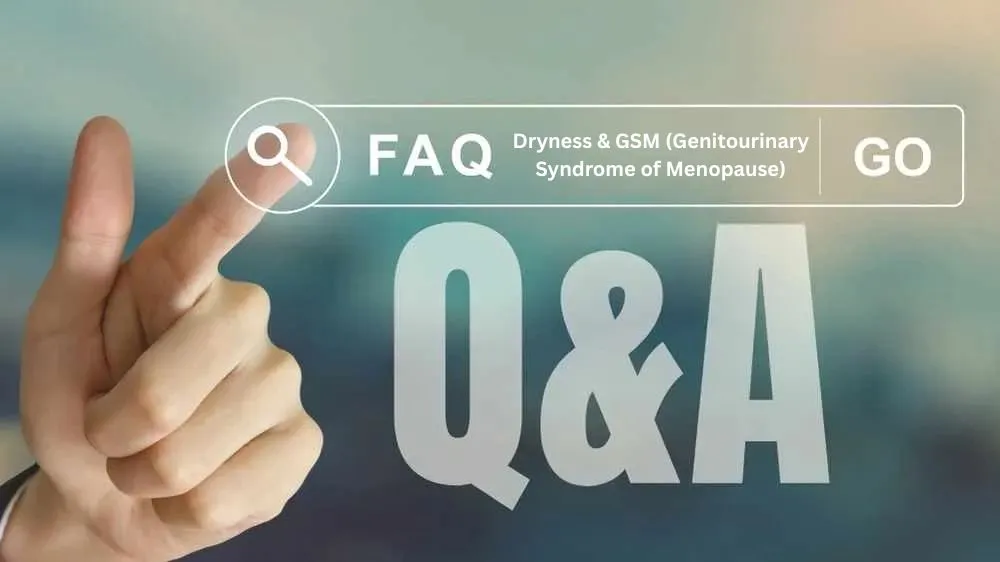What does NICE say about energy-based treatments for dryness?
NICE guidance prioritises non-hormonal care (vaginal moisturisers and suitable lubricants) and—when symptoms affect quality of life—low-dose local vaginal oestrogen for genitourinary syndrome of menopause (GSM). Energy-based vaginal treatments (laser or radiofrequency) are not first line; evidence quality is mixed and devices must meet UK medical-device rules with clear consent and follow-up. If considered, this should be after guideline-led care and an individual discussion of benefits, limits and risks. Educational only. Results vary. Not a cure.
Detailed Medical Explanation
What does NICE say about energy-based treatments for dryness? NICE places energy-based vaginal devices (fractional CO2/Er:YAG lasers and radiofrequency) after established, first-line measures for genitourinary syndrome of menopause (GSM). UK guideline care begins with vaginal moisturisers and suitable personal lubricants; if symptoms affect quality of life, low-dose local vaginal oestrogen is usually added. These options directly address the low-oestrogen biology behind GSM—thinner epithelium, raised pH and reduced lactobacilli—while energy devices aim to remodel tissue via heat. Because published studies vary in quality, design and follow-up, energy treatments are not considered first line. If explored, it should be within an informed, shared-decision conversation that covers expected benefit, uncertainty, safety, costs and maintenance.
Where this sits in a practical pathway. 1) Build foundations: gentle vulval care (lukewarm water; bland emollient as a soap substitute), breathable underwear, and a scheduled vaginal moisturiser (many choose hyaluronic acid gels) several times weekly. Keep a compatible lubricant for higher-friction moments—water-based (versatile, condom-friendly), silicone-based (long-lasting glide for vestibular tenderness) or oil-based (rich feel but may degrade latex condoms/toys). 2) If dryness, micro-tears, dyspareunia or urinary urgency/frequency persist, add local vaginal oestrogen (cream, pessary/tablet, ring) or consider vaginal DHEA after assessment. 3) Only when these guideline-led steps are insufficient or unsuitable should energy devices be discussed—ensuring you understand realistic outcomes and follow-up.
Safety, regulation and consent. In the UK, devices must be UKCA/CE-marked for intended use and operated by trained clinicians. You should receive clear written information about potential benefits and risks, what aftercare involves, how many sessions are planned, and signs that need medical review (e.g., fever, malodorous discharge, heavy bleeding, severe pelvic pain, or any new post-menopausal bleeding). Device choice does not replace evaluation for mimics of GSM (e.g., lichen sclerosus, BV, thrush, UTI, vestibulodynia) or the role of pelvic floor physiotherapy when protective muscle over-activity keeps the entrance tight.
Expectations and maintenance. If energy treatment helps, patients typically report easier glide with less sting at initial penetration, fewer superficial fissures and calmer day-to-day movement. Improvements—when they occur—are often gradual over weeks, with many pathways planning 2–3 sessions several weeks apart and a maintenance review at 6–12 months. Because responses vary, it’s sensible to set review points (e.g., 6–12 weeks) and to revert to the lowest effective routine that keeps you comfortable.
For a plain-English look at what treatment involves and answers to common questions in clinic see our FAQs. These pages show how energy devices are sequenced alongside moisturisers, local hormones and rehabilitation.
How this aligns with wider UK resources. Patient-facing NHS content covers symptom basics and self-care for vaginal dryness. NICE’s menopause guideline emphasises moisturisers/lubricants and considering low-dose local vaginal oestrogen when GSM affects quality of life—reflecting their stronger evidence base compared with device therapies. UK device oversight and vigilance are handled by the national regulator; clinicians should follow medical-device standards and report concerns through appropriate channels. When in doubt, ask your clinician how the device is regulated, what evidence supports it in your situation, and what follow-up is planned.
Clinical Context
Who might consider energy-based care? People with GSM whose symptoms persist despite diligent non-hormonal care plus local treatment (oestrogen or DHEA), or those who cannot/choose not to use local hormones after an informed discussion. It’s most relevant when the main problem is friction-related soreness or micro-tears rather than deep pelvic pain (which suggests other drivers).
Who should avoid or delay? Anyone with active infection (thrush/BV/UTI), uninvestigated discharge or bleeding, recent surgery without clearance, suspected dermatoses (e.g., lichen sclerosus) without diagnosis, unmanaged pelvic floor over-activity, pregnancy, or device-specific contraindications (e.g., certain implants/pacemakers for RF). Red flags (fever, severe pelvic pain, malodorous green/grey discharge, visible haematuria, or new post-menopausal bleeding) require medical assessment rather than device escalation.
Next steps. Map symptoms and goals; optimise foundations; confirm diagnosis; then, if still interested, discuss session number, spacing, costs and maintenance. Plan a review 6–12 weeks after each step to adjust to the minimum effective regimen that maintains comfort.
Evidence-Based Approaches
NICE & NHS framing. See the NICE Menopause Guideline (NG23) for first-line GSM care (moisturisers/lubricants; consider low-dose local vaginal oestrogen). Patient-friendly symptom and self-care advice appears on the NHS page for vaginal dryness. UK device regulation principles and safety reporting are outlined by the national regulator (medical devices) at the MHRA.
Comparators with stronger evidence. Systematic reviews in the Cochrane Library consistently show that local vaginal oestrogens improve dryness, soreness, dyspareunia and vaginal pH versus placebo across creams, tablets/pessaries and rings. Peer-reviewed overviews indexed on PubMed summarise GSM mechanisms (thinner epithelium, raised pH, reduced lactobacilli) and place energy devices as emerging options with heterogeneous evidence.
Applying the guidance. Follow a stepped plan: moisturiser + suitable lubricant → add local therapy if needed → consider energy-based devices only when established measures are unsuitable or insufficient, ensuring UKCA/CE-marked use, informed consent and follow-up. ® belongs to its owner.
